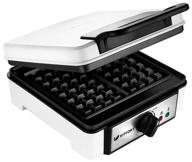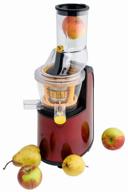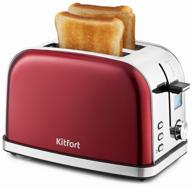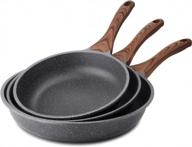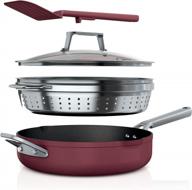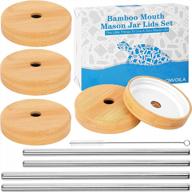The Best Cookware for Every Kitchen
Having the right cookware in your kitchen can make cooking easier, more enjoyable, and lead to better results. The type of cookware you need depends on your cooking style, preferences, and budget. This guide will provide an overview of the best options for any kitchen.
Nonstick Pans
Nonstick pans are a kitchen staple thanks to their slick cooking surface that prevents food from sticking. They make cooking eggs, pancakes, fish and more a breeze. The best nonstick pans are made from durable materials like anodized aluminum or ceramic rather than cheap thin coatings that can scratch and flake over time. High-quality nonstick pans from brands like All-Clad, Calphalon, and Oxo allow you to cook with little to no oil or butter needed.
Stainless Steel Pans
Stainless steel offers excellent durability and heats evenly for reliable cooking performance. The downside is food can stick without plenty of oil or butter. However, stainless steel pans are often layered with more conductive metals like aluminum or copper on the bottom to improve heat control. Some popular stainless steel pan options include:
- All-Clad Tri-Ply - Aluminum core bonded between stainless steel layers
- Cuisinart Multiclad Pro - Aluminum encapsulated bottom
- Tramontina Tri-Ply Clad - Affordable tri-ply alternative
Cast Iron
Cast iron has excellent heat retention and can be used for everything from searing steaks to baking cornbread. The more you use cast iron, the more the natural oils help build up a nonstick seasoning. Cast iron comes in basic skillets as well as enameled Dutch ovens from brands like Lodge, Le Creuset, and Staub.
Copper
Copper cookware conducts heat the quickest and most evenly of any material. It allows precise temperature control for dishes that need careful watching. But it requires diligent maintenance through polishing. High-end brands like Mauviel and Bourgeat offer beautiful copper pots and pans.
Carbon Steel
Carbon steel offers benefits similar to cast iron - excellent searing due to high heat retention and ability to develop a natural nonstick seasoning over time. Carbon steel is lighter weight than cast iron but not quite as durable. Still, it's a great option for woks and skillets from brands like Lodge and Matfer Bourgeat.
Bakeware Essentials
Having quality bakeware ensures reliable baking and broiling results. Essentials to have include:
- Rimmed baking sheets - aluminum or stainless steel
- 8x8 and 9x13 inch baking pans - aluminum or nonstick
- Loaf pans - aluminum or nonstick
- Pie pans - aluminum, glass, or ceramic
- Muffin tins - nonstick or aluminum
Choose pieces from reputable brands like Nordic Ware, USA Pan, or Fat Daddio's for the best performance.
The right cookware makes cooking not just easier, but more enjoyable. Evaluate your cooking habits and choose the pieces that suit your needs and kitchen style.
Similar products
Types of Cookware Materials: Pros and Cons
With so many cookware options on the market, it can be tricky to determine which types of pots, pans and bakeware are right for your needs. Different materials each have their own strengths and weaknesses. This guide will cover the pros and cons of common cookware materials to help you decide.
Stainless Steel
Pros:
- Very durable and scratch-resistant
- Oven and dishwasher safe
- Doesn't react with acidic foods
- Wide range of styles and prices
Cons:
- Poor heat conductor on its own
- Can stick due to lack of nonstick surface
- Discolors and stains over time
Aluminum
Pros:
- Excellent heat conductor
- Lightweight
- Often coated with nonstick finishes
- Inexpensive
Cons:
- Prone to warping
- Can react with acidic foods
- Susceptible to scratches and dents
Copper
Pros:
- Excellent heat conduction
- Responsive temperature control
- Naturally antimicrobial surface
Cons:
- Expensive
- Requires frequent polishing
- Reacts with some foods
Cast Iron
Pros:
- Extremely durable
- Superior heat retention
- Natural nonstick finish
- Inexpensive
Cons:
- Very heavy
- Seasoning requires maintenance
- Not dishwasher or oven safe
Ceramic
Pros:
- Completely nonstick when seasoned
- Durable if coated properly
- Retains heat well
- Stylish designs available
Cons:
- Prone to chipping if not cared for
- Not suitable for high heat
- Smaller cooking surface than other materials
Carbon Steel
Pros:
- Heats evenly and retains heat well
- Lightweight but still durable
- Develops natural nonstick patina
- Inexpensive
Cons:
- Can rust if not cared for
- Seasoning requires some maintenance
- Not dishwasher safe
Consider how you cook, what types of food you make, and how much maintenance you're willing to do when deciding between the pros and cons of each material. Your cooking needs and habits will determine which option is right for your kitchen.
How to Choose the Right Cookware for Your Needs
With so many types of cookware available today, it can be overwhelming trying to determine what is best for your cooking style and needs. Follow this guide to pick out the right pots, pans and bakeware for how you cook.
Consider Your Cooking Habits
Think about how often you cook and what types of meals you typically make. This will help narrow down your options.
- Minimal home cooking - Go for a basic stainless steel skillet and saucepan along with a couple nonstick pans.
- Mostly quick weeknight meals - Nonstick and stainless steel skillets and saucepans will cover you here.
- More elaborate cooking - You may want higher quality pieces like multi-ply stainless steel or enamel coated cast iron.
- Specialized cooking - Invest in cookware suited for your specialty whether that's baking, frying, searing meat, making sauces, etc.
Consider Cookware Materials
Factor in the pros and cons of different cookware materials based on your needs.
- Nonstick - Great for eggs and other delicate foods but wears out over time.
- Stainless steel - Very durable but not the best heat conductor. Often combined with aluminum or copper core.
- Cast iron - Heats evenly and becomes naturally nonstick over time but very heavy.
- Enamel coated - Pretty and provides nonstick surface but can chip if not cared for.
- Copper - Excellent heat control but requires frequent polishing.
Determine Your Budget
Cookware can range from very inexpensive to extremely pricey.
- Less than $100 - Basic aluminum, stainless steel, or ceramic nonstick pans and pots.
- $100-$300 - Mid-range multi-ply stainless or nonstick sets.
- $300+ - High-end brands like All-Clad, Le Creuset, and Staub.
Consider how much you are willing to spend upfront vs replacing cheaper cookware more often.
Pick Cookware Styles
Choose styles to suit your cooking needs:
- Skillets/frying pans - Available in a range of sizes. At least 12” and 10” are useful to have.
- Saucepans - 1 quart and 3 quart sizes handle most basic cooking.
- Stock pots - 8 quart size minimum for soups, boiling pasta, etc.
- Sauté pans - Deeper sides than skillets make these great for cooking meat.
- Specialty pans - Griddles, grill pans, woks and more for specialized cooking techniques.
Don't Forget Bakeware
Essentials like baking sheets, cake pans, and muffin tins are key for any baker. Stainless steel, aluminum, and nonstick are good material options.
Take stock of your cooking style, needs and budget, and equip your kitchen with the right cookware. Having the right tools will make cooking at home a pleasure.
Cookware Buying Guide: Features to Look For
With so many options on the market, it can be tricky to know what to look for when shopping for cookware. Focus on these key features to help you pick out quality pots, pans, and bakeware.
Materials
Cookware comes in a range of materials, each with pros and cons:
- Stainless steel - Durable and scratch-resistant but not the best heat conductor. Often has an aluminum or copper core to improve heating.
- Cast iron - Superb heat retention and becomes naturally nonstick. Very heavy. Enameled cast iron has a protective finish to prevent rust.
- Nonstick - Food doesn't stick thanks to the slippery coating. This coating eventually wears off though.
- Ceramic - Naturally nonstick when properly seasoned. Retains heat well but prone to chipping.
Weight
Heavier pots and pans made from materials like cast iron retain heat better. But lighter weight aluminum and stainless steel is easier to maneuver.
Balance and Handles
Choose pots and pans that feel balanced and have securely attached, stay-cool handles. For example, All-Clad saucepans feature riveted stainless steel handles that help balance the pan when lifting and pouring.
Lids
Lids should fit tightly and have heat-resistant knobs or handles. Glass lids make it easy to view food while cooking. Stainless steel lets you retain more heat.
Finish Quality
A smooth, even finish without bumps or inconsistencies will ensure better cooking performance. High-end brands like Le Creuset carefully inspect each piece.
Oven and Dishwasher Safety
If using cookware in the oven or dishwasher, verify it's rated for high heat and dishwasher cleaning. For example, many nonstick and aluminum pans cannot safely go in the oven or dishwasher.
Warranty
A lifetime or limited lifetime warranty provides peace of mind. It's an indication of confidence in the cookware's durability.
Price
Higher prices often mean better materials, construction, and performance. But quality cookware doesn't have to be extremely expensive. Brands like Tramontina offer excellent value for the price.
By examining these key features, you can determine which cookware lines and pieces will be the best investment for your kitchen and cooking style.
Cleaning and Caring for Your Cookware
Properly cleaning and caring for your pots, pans, and other cookware will help them last longer and remain in top cooking condition. Follow these tips to maintain your cookware.
Read the Manual
Check the care instructions that came with your cookware. This will indicate any special cleaning methods or warnings.
Handwash When Possible
Gently handwashing with mild dish soap rather than harsh dishwashing detergent will help preserve your cookware's finish. Avoid abrasive scrubbers.
Dry Thoroughly
Always dry cookware fully with a dish towel rather than letting air dry. This helps prevent water spots and rust.
Avoid Temperature Extremes
Don't plunge hot cookware into cold water or subject it to very high heat when empty, as this can damage finishes.
Season and Re-season
For cast iron or carbon steel, season regularly by coating lightly with oil and heating slowly to polymerize the oil. Re-season if cookware loses its nonstick patina.
Remove Stains
Use a non-abrasive cleanser like Bar Keepers Friend or Bon Ami to gently remove stains and discoloration on stainless steel or enameled surfaces.
Store Properly
Hang pots and pans or place carefully stacked on shelves to avoid dents and scratches in storage.
With proper care, your cookware can deliver delicious meals for years to come.
Common Problems with Cookware and How to Fix Them
Cookware can develop issues with use over time. Fortunately, many common problems have easy solutions.
Food Sticking
Ensure the pan is properly preheated before adding oil or food. Deglaze stuck bits by boiling water for a few minutes. Re-season cast iron or carbon steel. Replace worn nonstick coatings.
Rust Spots
Remove rust with Bar Keepers Friend cleaner and re-season cast iron. Or rub stainless steel with oil or lemon juice. Always hand dry cookware thoroughly.
Warping
Avoid extreme temperature changes and don't leave empty cookware over high heat. Copper and aluminum pans are more prone to warping. Use on lower heat and gradually bring to temperature.
Chipping or Cracking
Don't use enamel coated or ceramic cookware at very high temperatures. Replace damaged pieces. In the future, ensure pans are fully preheated before adding oil or food.
Discolored Interior
For stained stainless steel, boil a 50/50 water and vinegar solution for 15 minutes. Bar Keepers Friend also removes discoloration. Ensure pans are hand washed after cooking.
Broken Handle
If the handle is loose, tighten the fasteners if possible. For broken handles, contact the manufacturer as the cookware may still be under warranty.
With a little care and maintenance, most cookware issues can be resolved. Avoid further problems by properly caring for pots and pans.
Learn About Amazon Prime Benefits
An Amazon Prime subscription provides users with benefits like free 2-day shipping, streaming video/music, and other perks. For frequent Amazon shoppers buying kitchen supplies and cookware, the free fast shipping alone may make the $139 annual fee worthwhile.
Maximize Amazon Prime for Cookware Savings
Those with Prime can take advantage of special deals exclusive to members only. Subscribe to Prime before you need to stock up on pots and pans. Then you can take full benefit of Prime Day limited deals, Lightning Deals, and other cookware sales not available to regular customers.
Research Seller Policies
Make sure to understand Amazon's rules regarding Prime subscriptions. Sharing individual Prime benefits with non-members or otherwise profiting from a Prime account goes against Amazon's conditions. Review their subscription policies carefully.
Using an Amazon Prime membership responsibly can provide real value to frequent shoppers. But it's important to follow Amazon's guidelines for acceptable use of Prime accounts.
What Are The Most Popular Materials Used In Cookware??
Here are the most popular materials used in cookware based on the search results:
Each material has its own pros and cons, and choosing the right one depends on your cooking style and preferences. Stainless steel is nonreactive and heats up quickly, while cast iron is durable and retains heat well. Aluminum is affordable and conducts heat well, but can react with acidic foods. Copper is a great conductor of heat, but can be expensive. Non-stick cookware is easy to clean, but can be harmful if scratched. Carbon steel is lightweight and heats up quickly, while enameled cast iron is durable and easy to clean. Ceramic is non-reactive and easy to clean, but can be fragile.
What Are The Pros And Cons Of Using Cast Iron Cookware??
Here are the pros and cons of using cast iron cookware:
Pros:
Cons:






